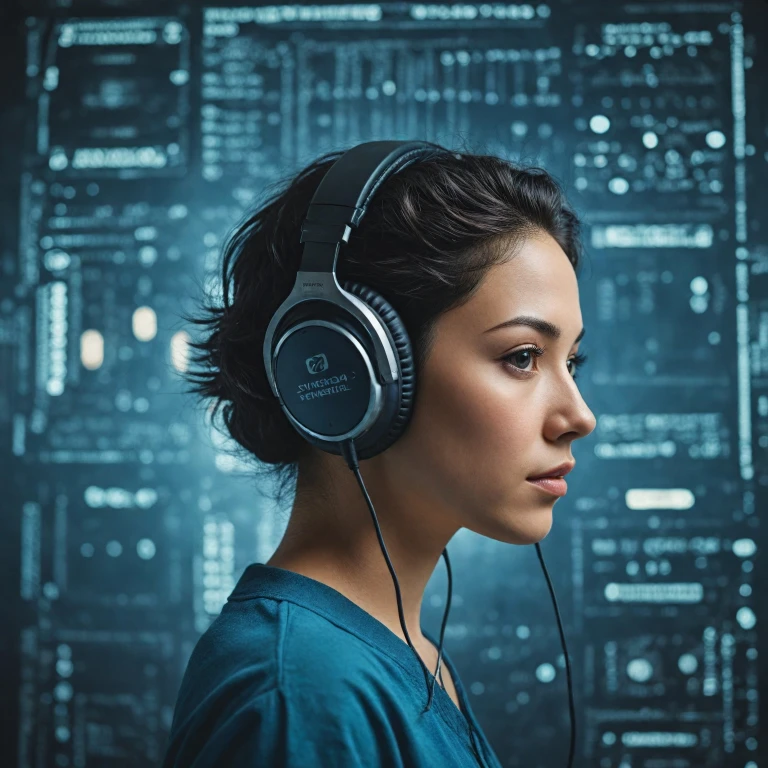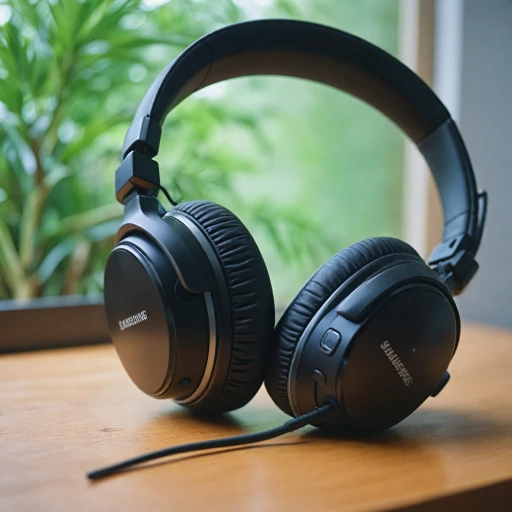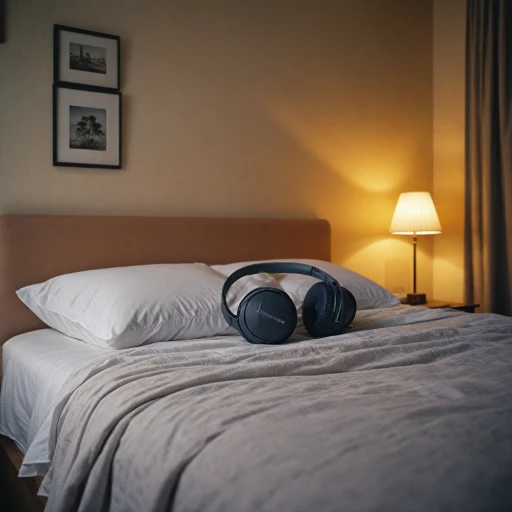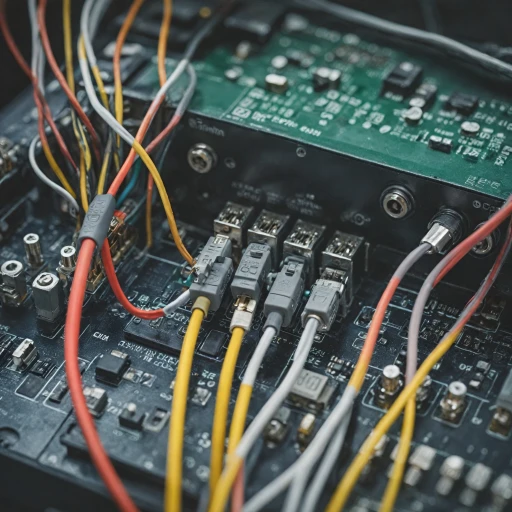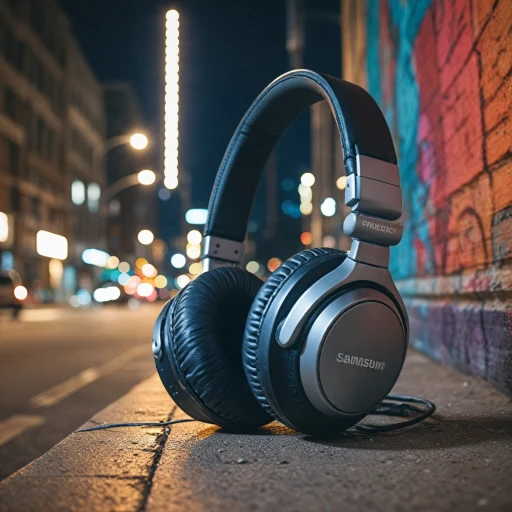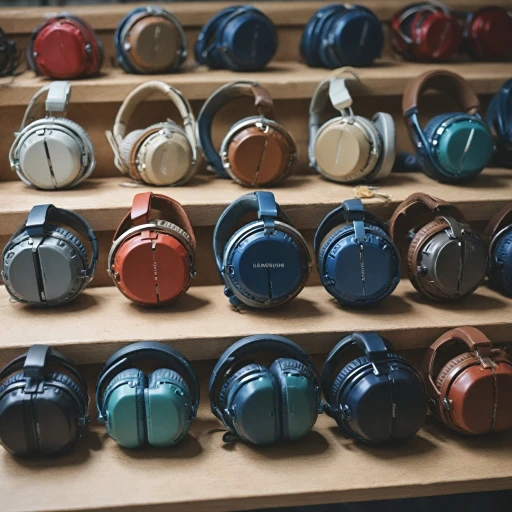
The Basics of Noise Canceling Technology
Delving into Noise Canceling Mechanisms
The fundamentals of noise canceling technology revolve around one simple concept: subtracting unwanted sound from the desired audio output. The process primarily uses active noise cancellation (ANC), which employs microphones to pick up external sounds. Then, through a sophisticated system involving digital audio processing, these sounds are countered with anti-phase signals, effectively neutralizing the noise before it reaches your ears. This creates an immersive audio experience that is pivotal for enjoyment in various settings, whether you're listening to music, tuning into a headphone amplifier, or engaging with any high-fidelity audio converter. A crucial component in this system is the digital to analog converter or DAC. Its role is to convert digital audio input into analog signals, which most headphones emit as sound. The intricacy of noise cancellation is deeply intertwined with the efficiency of the DAC, affecting everything from sound clarity to power consumption. For those seeking an improved audio experience, selecting headphones with a high-quality DAC can make a significant difference. With options ranging from portable products like fosi audio to desktop solutions involving optical outputs, the market is saturated with diverse choices to fit any preference. Whether you're purchasing for everyday use or tailoring a desktop DAC system for specific needs, understanding these components can illuminate your audio journey. In exploring the technical components of noise canceling headphones, it's vital to consider the broader landscape of the digital-to-analog conversion process, as it is a key player in your listening experience. For a deeper dive into noise canceling solutions and how they can be tailored to individual needs, explore the guide to noise-canceling solutions.What is a Digital to Analog Converter?
{Decoding the Functionality of DACs
A Digital to Analog Converter (DAC) is a crucial element in the realm of audio technology, particularly when it comes to enhancing the audio experience in noise canceling headphones. Essentially, a DAC translates digital audio signals into analog signals. This conversion process is vital because the output that we hear through headphones is in analog form, whereas most audio files are stored in a digital format.
When you play a digital audio file, whether from a music streaming service or a desktop system, the DAC takes the digital input and translates it into a continuous flow of analog sound waves. This process is paramount for achieving high-fidelity sound quality. The quality of this translation can significantly affect the clarity and richness of your audio output. Therefore, the type and specification of a DAC, such as its khz rating, play a pivotal role in the overall sound experience offered by products like the Audioquest Dragonfly.
Diverse DAC Features
Different headphone gadgets boast varying DAC features impacting audio quality, price, and power consumption. For instance, products designed for desktop use might employ a different kind of DAC compared to those used in compact forms factor like the Fosi Audio or Dragonfly Cobalt, which are revered for delivering high-quality sound despite their small size.
As the demand for superior audio quality rises, so does the need for sophisticated DAC systems capable of augmenting the listening experience. Options range from portable USB-powered units to robust desktop DACs designed with optical and coaxial digital inputs to cater to diverse audio preferences.
Ensuring Seamless Integration
Another factor comes into play when contemplating the best DAC for noise canceling headphones. It's not just about the numbers or the sale price, but how well the DAC integrates with the entire audio system. The chosen DAC must complement other components like headphone amplifiers and should harmonize with the amplifier's power to enhance the output level.
Ultimately, understanding how a DAC functions can help make informed decisions about the audio converter that suits one's specific audio needs. To gain more insights into headphone technology, especially related to the connections and wiring, you might find useful details in this guide on the essential XLR pinout configurations for noise canceling headphones.
}The Importance of DACs in Noise Canceling Headphones
The Crucial Role of Digital to Analog Converters
In the world of audio products, the digital to analog converter, commonly known as DAC, plays a pivotal role, especially in noise canceling headphones. These small but powerful components are responsible for transforming digital audio signals into analog output that our ears can perceive as sound. Without this conversion, the music from your favorite devices would remain an indecipherable stream of digital data. For quality sound reproduction, every digital audio system, including DAC-enabled headphones, relies on an efficient DAC. In noise canceling headphones, a high-performance DAC becomes crucial as it directly impacts the audio quality. It’s responsible for preserving the integrity of the sound, ensuring that high-fidelity music retains its richness and depth. The output level delivered by a DAC varies, which affects the headphone amplifier within noise canceling headphones. This variation can be particularly important when dealing with high-resolution files at different khz rates. For those keen on getting the best audio experience, considering the type and quality of the DAC is essential. As the market for noise canceling headphones evolves, the demand for superior DACs has surged. Products like the Dragonfly Cobalt are a testament to this trend, offering improved sound quality through advanced digital conversion techniques. Brands in the audio industry are continually innovating to incorporate high-performing DAC systems, enhancing the overall user experience. For those on the hunt for quality noise canceling headphones, it's vital to evaluate the specific DAC technology used and how it fits into your broader audio ecosystem. Understanding the nuances of digital and analog audio conversion, including aspects like usb or optical inputs, can make a significant difference. To explore more about choosing the most suitable headphones, check out the right noise canceling headphones for lawn mowing, where we delve into specific features and user needs.Choosing the Right DAC for Your Headphones
Selecting the Best Digital to Analog Converter for Your Headphones
When embarking on your search for the perfect digital to analog converter (DAC) to complement your noise canceling headphones, it is vital to consider key factors that influence sound quality and overall performance. The right DAC will convert digital audio signals into analog signals, ensuring superior sound output for your music and audio needs. Here are some crucial aspects to keep in mind:
- Sound and Power: The primary role of a DAC is to enhance the sound quality. Look for DACs with high resolution, often denoted in kilohertz (kHz), which can handle various audio formats, resulting in a richer, clearer audio experience. Some renowned products include the Dragonfly Cobalt, known for its excellent sound reproduction.
- Compatibility and Connections: A DAC can have different connectivity options, such as USB, optical, and regular audio outputs. Be sure to choose one that matches your existing system setup, whether it's a laptop, desktop, or other audio devices. USB DACs, for example, often offer plug-and-play convenience and are commonly used for desktop setups.
- Price and Features: The price of DACs can vary significantly. While higher-priced models may offer more features such as higher output levels or a built-in headphone amplifier, there are also affordable options that provide excellent performance for their price. Checking the regular and sale prices of various options can help in finding a DAC that meets your budget.
- Portability and Use-Case: Consider whether you need a portable DAC that can easily be carried with your headphones or a stationary desktop DAC. Portability may be key if you frequently use your headphones on the go.
- Brand Considerations: Research reputable brands known for producing high-quality audio converters. Brands like AudioQuest and Fosi Audio are popular choices among audiophiles and casual users alike.
By evaluating these criteria, you can select a DAC that will not only enhance your headphone experience but will also fit seamlessly into your existing audio system. Thoroughly researching products, reading reviews, and understanding the features that suit your specific needs can lead you to the optimal choice among the wide array of DACs on the market.
